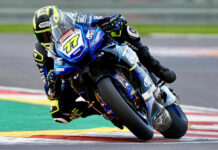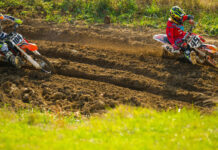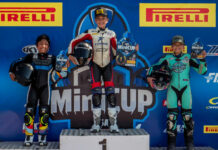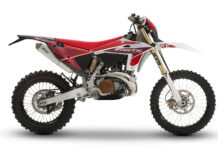Boom! Here Comes the Mach IV
Much more than just a Mach III 500, the 1972 Mach IV 750 was a smoother, more comfortable superbike. But it was also very, very fast.
Irvine, California — The launch of the 1969 Mach III 500 H1 motorcycle vaulted Kawasaki from its position as an aggressive upstart motorcycle company to the zenith of the sport almost overnight. Yet, Kawasaki’s ambitions that spawned the H1 were hardly quenched by its success, particularly since the motorcycle industry was also growing at a rapid pace. In addition, the arrival of a certain Japanese competitor’s groundbreaking four-cylinder 750 bike in 1969 had admittedly set a benchmark of its own. So what to do? Take the H1 and amplify it. This was war.
That’s exactly what Kawasaki did for 1972. With 50 percent more displacement than the H1, the all-new Mach IV 750 H2 superbike substantially raised the bar for performance as Tony Nicosia set a production-bike ¼ mile record of 11.95 seconds at 115.38 mph at Fremont Dragstrip in California on March 11, 1972. Quite literally, the new H2 put on two wheels the company’s tagline, “Come out ahead on a Kawasaki.”
The specifications were impressive: three air-cooled cylinders displacing 249cc each and fed by individually tunable 30mm Mikuni carburetors. Instrumentation included a 12,000-rpm tachometer and 140-mph speedometer that meant business. The big airbox and triple chromed exhausts delivered a wail at full throttle audible clear across town on a Saturday night. No wonder the H2 instantly owned the 750cc production class in both drag racing and road racing. In fact, on September 12, 1971 Ralph White had already given the H2 its first roadrace win, taking the checkers in the AFM Open Production class at Orange County International Raceway in California. Amazingly, this early-production machine was totally stock, having just been flown in for a dealer meeting!
Beyond once again blowing the roof off streetbike performance with the H2, Kawasaki sought civility with a roomier cockpit, wider seating, more compliant suspension, reduced vibration and more cornering clearance – all for just $1,395. While much bigger and badder, the H2 was also more refined, a philosophy that would define the four-cylinder, four-stroke Z1 juggernaut the next year.
With its production run lasting from 1972 to 1975, the Mach IV 750 H2 eventually became the leader of Kawasaki’s five-bike “Tri-Star” lineup that also included the 500cc H1, 400cc S3, 350cc S2 and 250cc S1 models. Now in keen demand by collectors, the H2 has earned its rightful place on Kawasaki’s performance pyramid – crowding in at the top!
ABOUT KAWASAKI
Kawasaki Heavy Industries, Ltd. (KHI) started full-scale production of motorcycles over a half century ago. The first Kawasaki motorcycle engine was designed based on technical know-how garnered from the development and production of aircraft engines, and Kawasaki’s entry into the motorcycle industry was driven by the company’s constant effort to develop new technologies. Numerous new Kawasaki models introduced over the years have helped shape the market, and in the process have created enduring legends based on their unique engineering, power, design and riding pleasure. In the future, Kawasaki’s commitment to maintaining and furthering these strengths will surely give birth to new legends.
Kawasaki Motors Corp., U.S.A. (KMC) markets and distributes Kawasaki motorcycles, ATVs, side x sides, and Jet Ski® watercraft through a network of approximately 1,100 independent retailers, with close to an additional 7,700 retailers specializing in general purpose engines. KMC and its affiliates employ nearly 3,100 people in the United States, with approximately 300 of them located at KMC’s Irvine, California headquarters.
Kawasaki’s tagline, “Let the good times roll.®”, is recognized worldwide. The Kawasaki brand is synonymous with powerful, stylish and category-leading vehicles. Information about Kawasaki’s complete line of powersports products and Kawasaki affiliates can be found on the Internet at www.kawasaki.com.






